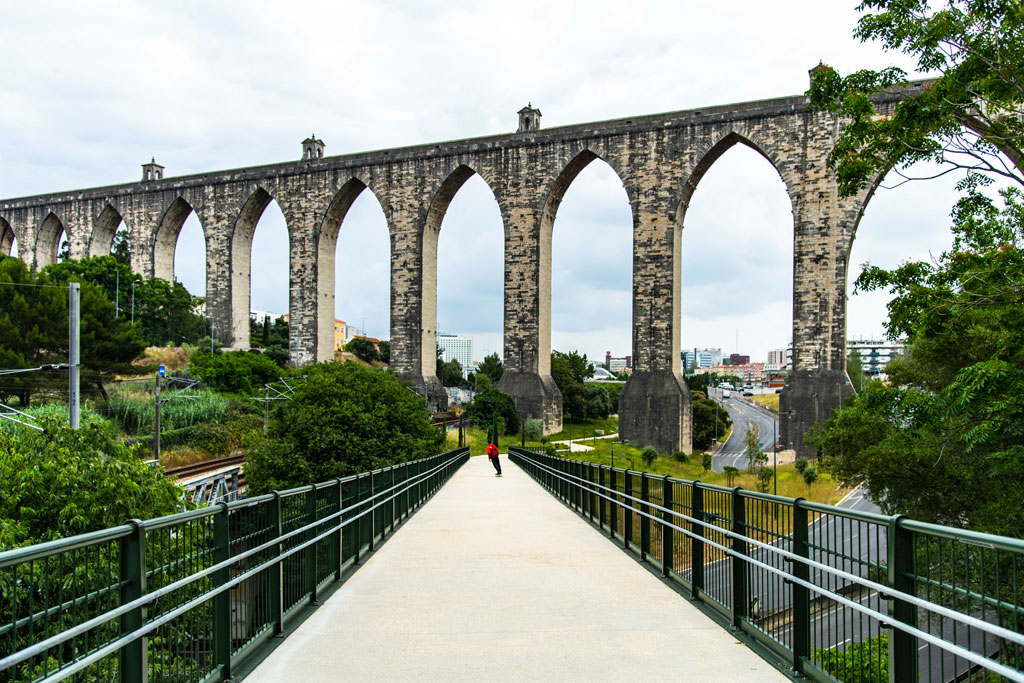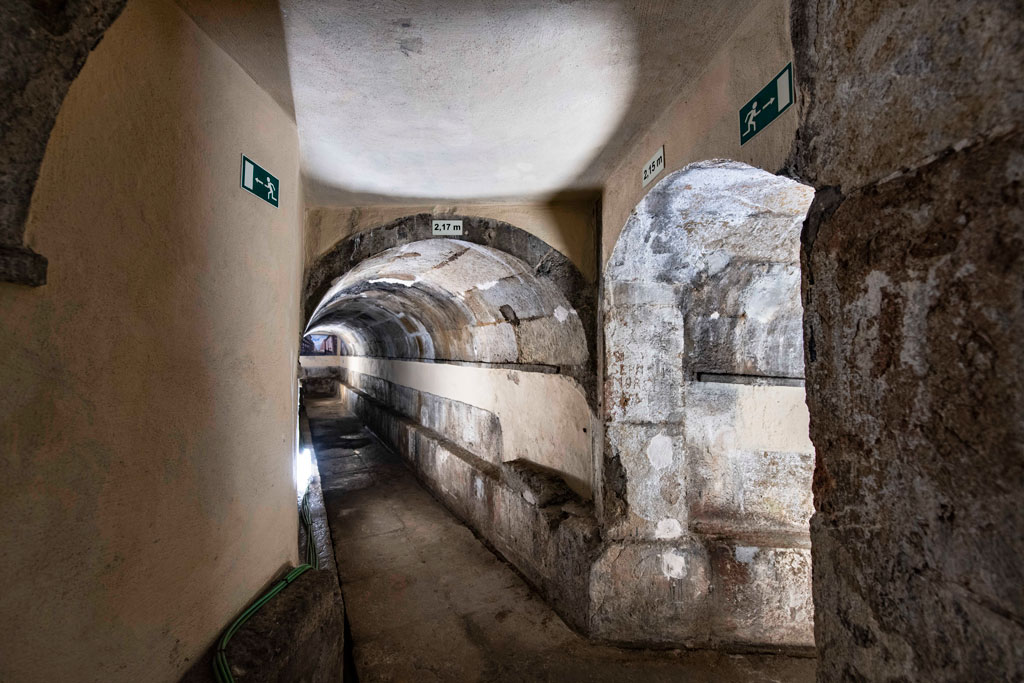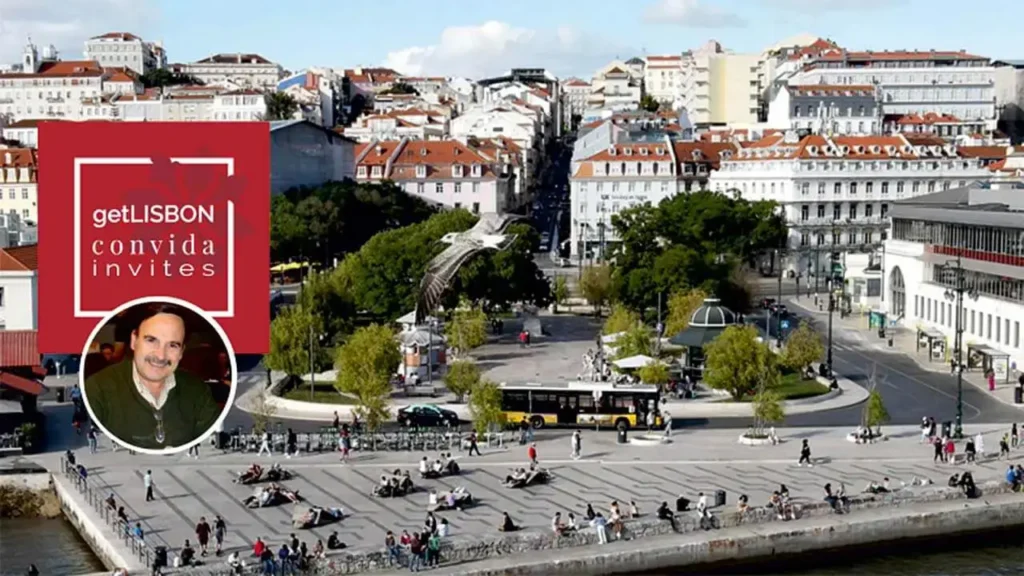In today’s getLISBON invites series, the historian Bárbara Bruno takes us to the five nuclei of the Water Museum. This institution brings together a relevant heritage of this city and invites us to reflect on the sustainability of the environment and the value of this essential good. So let’s dive into Lisbon!
Water is an essential element in the formation of cities and its impact on their evolution over the centuries is evident. In Lisbon, the history of water supply confirms this premise and the technology that has been used over the centuries, in its conquest, continues to be part of the city’s daily life, remembering in each water spout, cistern, square or fountain, that the hydraulic heritage is a reason to visit Lisbon.
Any description of the city would be incomplete without mentioning one of its landmarks, the Águas Livres Aqueduct. This is one of the most important examples of hydraulic architecture in Portugal, like the imposing Mãe d’Água das Amoreiras Reservoir or the mysterious underground galleries that we can walk through between Rato and Bairro Alto. It’s also impossible to ignore the grandiose steam engine of the Barbadinhos Steam Pumping Station, which, from the 19th century from the Santa Engrácia area, has supplied water to the city of Lisbon.
These are the reasons why you should “dive” in Lisbon and get to know its history, enjoying these centuries-old structures and unforgettable routes.
With several nuclei, and a strong presence in Lisbon, the Water Museum is responsible for a cultural, industrial and historical heritage that reflects different eras of the city, representing a substantial part of its history, and an environmental and sustainability message that calls for the value of water.
Walking through the monumental Águas Livres Aqueduct, enjoying the panoramic view from the terrace of the Mãe d’Água das Amoreiras Reservoir, going down to the mysterious Patriarcal Reservoir, walking through the secret Loreto Underground Gallery and, finally, trying the station’s steam engine of Barbadinhos Steam Pumping Station, these are the five highlights of the Water Museum that you shouldn’t miss!
Águas Livres Aqueduct

Landmark of the capital, the crossing of the Alcântara Valley, which can be visited both inside and outside, along 941 metres, with arcades reaching a maximum height of 65 metres, has a privileged view over Lisbon.
It’s also around this crossing that the “veil of mystery” has always been drawn around some particularly gruesome deeds of a 19th century character named Diogo Alves.
The Águas Livres Aqueduct, built between 1731 and 1799, is a vast water collection and transport system by gravity, with a total of 58 km of pipes between the springs (located about 15 km northwest of Lisbon), and the fountains of the capital.
It has been classified as a National Monument since 1910 and registered on the UNESCO World Heritage list since 2016.
Opening hours to the public: Tuesday to Sunday, 10.00 am – 5.30 pm. Closed on Mondays and public holidays.
Guided tours (booking required): Phone: +351 218 100 215 | Email: [email protected]
Mãe d’Água das Amoreiras Reservoir

This reservoir, designed in 1746 by the Hungarian architect Carlos Mardel, was built to receive and distribute water transported by the Águas Livres Aqueduct.
Its interior is a precious hideout in the city where the atmosphere emanates from the combination of the presence of water, the conjugation of volumes provided by the columns, tank and waterfall, and from the natural lighting of the space provided by the immense side windows.
At the top it’s possible to access the panoramic terrace overlooking the city and observe a 360º view of Lisbon.
The Mãe d’Água das Amoreiras Reservoir is an integral part of the Águas Livres Aqueduct and has been classified as a National Monument since 1910 and inscribed on the UNESCO World Heritage List since 2016.
Opening hours to the public: Tuesday and Wednesday: 10.00 am – 5.30 pm (closed for lunch: 1.30 pm – 2.30 pm); Thursday, Friday, Saturday and Sunday: 10.00 am – 1.30 pm. Closed on Mondays and public holidays.
*This schedule can be changed according to the immersive shows on display at the Mãe d’Água das Amoreiras Reservoir.
Patriarcal Reservoir

Anyone who crosses the Príncipe Real Garden and, next to the lake, chooses to go down the stairs, will discover the Patriarcal Reservoir in the underground, whose construction was completed in 1864.
It was one of the first reservoirs in the Lisbon water distribution network (1856), having been initially supplied by the Águas Livres Aqueduct and, from 1890, by the waters of the Alviela Aqueduct. It has an octagonal shape, matching the design of the lake at the top.
Guided tours (booking required): Phone: +351 218 100 215 or email: [email protected]
Loreto Underground Gallery

Accessed by either the Mãe d’Água das Amoreiras Reservoir or the Patriarcal Reservoir, the Loreto underground Gallery, which the youngest will certainly identify as a secret passage, started to be built in 1747 and comprises a total length of 2,835 metres.
The about 1 km route that can be visited starts mysteriously at half-light, in the underground tunnel, and ends illuminated in the Príncipe Real area or in the São Pedro de Alcântara viewpoint.
This gallery was part of the water distribution system that supplied important Lisbon fountains, such as the São Pedro de Alcântara fountain, the Carmo fountain, the Século fountain or the Praça da Alegria fountain. The entire route of this gallery goes down Rua das Amoreiras, passes through Largo do Rato, crosses Rua da Escola Politécnica, goes down Rua Dom Pedro V and Rua da Misericórdia and finally ends at Largo de São Carlos.
Guided tours routes:
● Casa do Registo (Mãe d’Água das Amoreiras Reservoir) – Viewpoint of São Pedro de Alcântara;
● Casa do Registo (Mãe d’Água das Amoreiras Reservoir) – Patriarcal Reservoir (Príncipe Real Garden);
● Patriarcal Reservoir (Príncipe Real Garden) – Viewpoint of São Pedro de Alcântara.
Booking required: Phone: +351 218 100 215 or email: [email protected]
Barbadinhos Steam Pumping Station

On the fence of an extinct Franciscan convent, occupied between 1747 and 1834 by the religious order of the Barbadinhos Italianos, the Barbadinhos Steam Pumping Station was installed, intended to pump water from the Alviela aqueduct to the city.
The pumping station building, in operation between 1880 and 1928, was composed of three bodies: the coal deposit, the boiler area and the steam engine area.
In 1950, the building was remodelled to house, among others, the headquarters of the Water Museum. Although the boilers and chimney were demolished, the steam engines and their suction and compression pumps from the French Manufacturer E. Windsor & Fils were preserved, as a main part of the Water Museum’s heritage and an enriching testimony of industrial archaeology. It’s one of these machines that we can still see in operation today.
In 2010 it was classified as a Set of Public Interest.
Inside you can find the Water Museum’s long-term exhibition, where the theme of water is approached in an interdisciplinary way, crossing history, science, technology and sustainability.
Opening hours to the public: Tuesday to Sunday from 10.00 am to 5.30 pm. Closed on Mondays and public holidays.
Visit the Water Museum Virtually

For those who can’t leave home, the Water Museum is open online 24 hours a day. You can immerse yourself in the experiences, at any time of the day, through the virtual tours, which have been designed to give a 360º view of each of the buildings and take visitors on a panoramic view of these emblematic sites of the history of water in the city.
Águas Livres Aqueduct
Mãe d’Água das Amoreiras Reservoir
Barbadinhos Steam Pumping Station
And because the Water Museum is more than just a single visit, follow us on: Facebook and Instagram.

You can also watch our guided tours, documentaries or interviews on Youtube.
The Water Museum has two multimedia apps to help you in your experiences:
- “Your Podcast Museum”: for ios and android that allows you to download the audio guide for each place of visit;
- “myEyes”: an app aimed for visually impaired people, which allows visitors to move around the Water Museum’s spaces in an autonomous and informed way.
And an app, with all the updated information:
- “Water Museum” – the Water Museum App that allows the visitor not only to access all the updated programming and general information, but also to “dive” into augmented reality experiences.
| Never miss another article | Subscribe here |
Photo credits, Hugo David, 2021

Bárbara Bruno
Senior Technician at the Water Museum since 1998. Degree in History, Master in Heritage Studies and Doctoral Student in Contemporary History at the Faculty of Social Sciences and Humanities of Nova University Lisbon.
Vice-President of APAI – Portuguese Association of Industrial Heritage, associate researcher at the Institute of Contemporary History of the Faculty of Social and Human Sciences of Nova University Lisbon.




